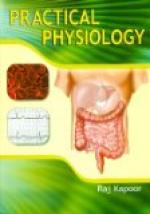Molecule (dim. of Lat. moles, a mass). The smallest quantity into which the mass of any substance can physically be divided. A molecule may be chemically separated into two or more atoms.
Morphology (Gr. morphe, form, and logos, discourse). The study of the laws of form or structure in living beings.
Motor (Lat. moveo, motum, to move). The name of the nerves which conduct to the muscles the stimulus which causes them to contract.
Mucous Membrane. The thin layer of tissue which covers those internal cavities or passages which communicate with the external air.
Mucus. The glairy fluid secreted by mucous membranes.
Myopia (Gr. myo, to shut, and o#x1F64;ps, the eye). A defect of vision dependent upon an eyeball that is too long, rendering distant objects indistinct; near sight.
Myosin (Gr. mos, muscle). Chief proteid substance of muscle.
Narcotic (Gr. narkao, to benumb). A medicine which, in poisonous doses, produces stupor, convulsions, and sometimes death.
Nerve Cell. A minute round and ashen-gray cell found in the brain and other nervous centers.
Nerve Fiber. An exceedingly slender thread of nervous tissue.
Nicotine. The poisonous and stupefying oil extracted from tobacco.
Nostril (Anglo-Saxon nosu, nose, and thyrl, a hole). One of the two outer openings of the nose.
Nucleolus (dim. of nucleus). A little nucleus.
Nucleus (Lat. nux, a nut). A central part of any body, or that about which matter is collected. In anatomy, a cell within a cell.
Nutrition (Lat. nutrio, to nourish). The processes by which the nourishment of the body is accomplished.
Odontoid (Gr. o#x1F40;doys, a tooth, eids, shape). The name of the bony peg of the second vertebra, around which the first turns.
OEsophagus. Literally, that which carries food. The tube leading from the throat to the stomach; the gullet.
Olecranon (Gr. olene, the elbow, and kranion, the top of the head). A curved eminence at the upper and back part of the ulna.
Olfactory (Lat. olfacio, to smell). Pertaining to the sense of smell.
Optic (Gr. o#1F40;pteyo, to see). Pertaining to the sense of sight.
Orbit (Lat. orbis, a circle). The bony socket or cavity in which the eyeball is situated.
Organ (Lat. organum, an instrument or implement). A portion of the body having some special function or duty.
Osmosis (Gr. osmos, impulsion). Diffusion of liquids through membranes.
Ossa Innominata, pl. of Os Innominatum (Lat.). “Unnamed bones.” The irregular bones of the pelvis, unnamed on account of their non-resemblance to any known object.
Otoconia (Gr. oys, an ear, and konia, dust). Minute crystals of lime in the vestibule of the ear; also known as otoliths.




